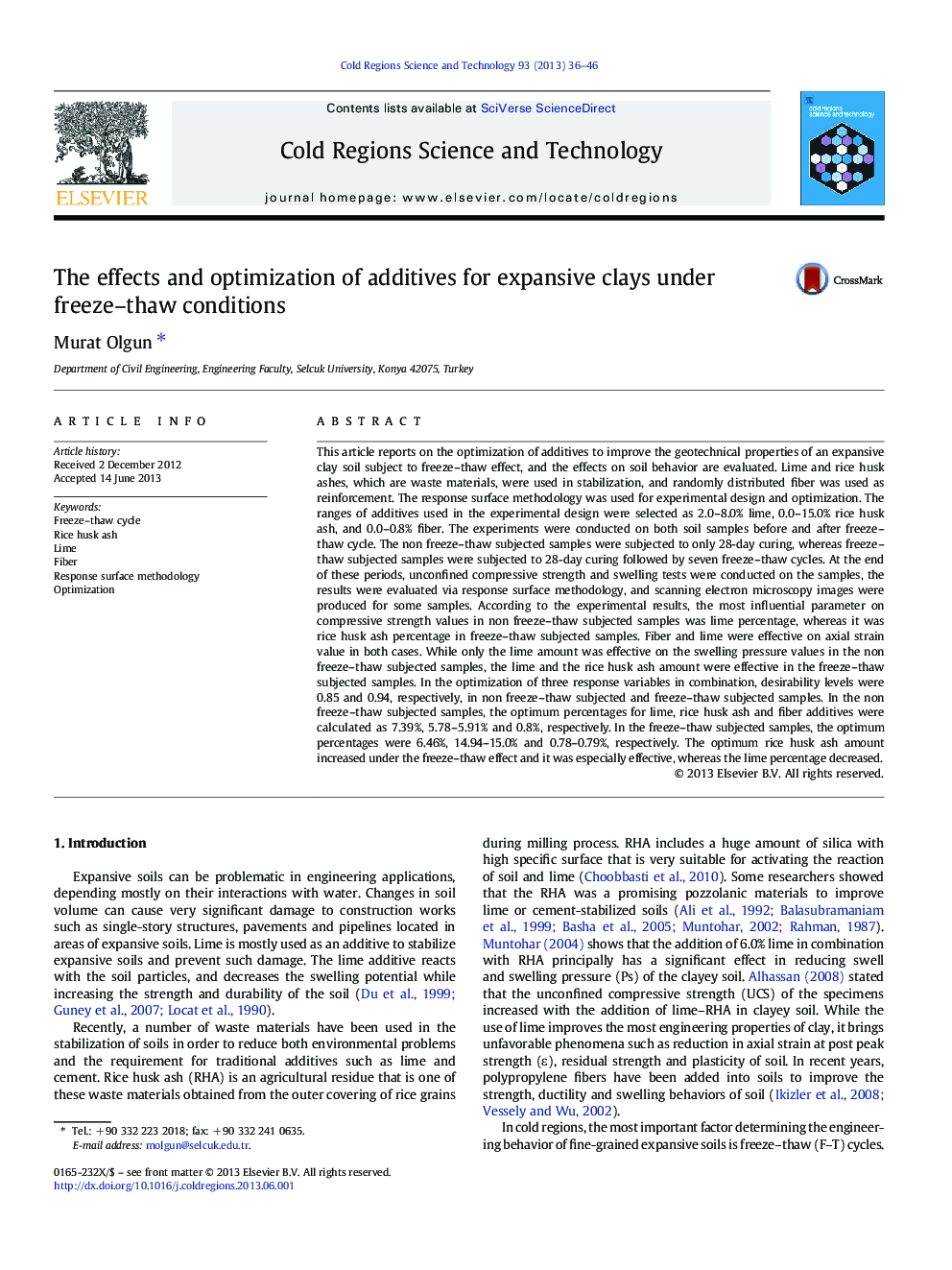| Article ID | Journal | Published Year | Pages | File Type |
|---|---|---|---|---|
| 4675842 | Cold Regions Science and Technology | 2013 | 11 Pages |
•The expansive clay was stabilized by lime, RHA and fiber and subjected to F–T cycles.•RSM is one of the suitable methods to optimize the amount of additives.•Using the RHA pozzolan, especially under the effects of F–T cycles was important.•The most influential parameter on UCS values in F–T subjected samples was the RHA percentage.•The lime and the RHA amount were effective on swelling pressure in F–T subjected samples.
This article reports on the optimization of additives to improve the geotechnical properties of an expansive clay soil subject to freeze–thaw effect, and the effects on soil behavior are evaluated. Lime and rice husk ashes, which are waste materials, were used in stabilization, and randomly distributed fiber was used as reinforcement. The response surface methodology was used for experimental design and optimization. The ranges of additives used in the experimental design were selected as 2.0–8.0% lime, 0.0–15.0% rice husk ash, and 0.0–0.8% fiber. The experiments were conducted on both soil samples before and after freeze–thaw cycle. The non freeze–thaw subjected samples were subjected to only 28-day curing, whereas freeze–thaw subjected samples were subjected to 28-day curing followed by seven freeze–thaw cycles. At the end of these periods, unconfined compressive strength and swelling tests were conducted on the samples, the results were evaluated via response surface methodology, and scanning electron microscopy images were produced for some samples. According to the experimental results, the most influential parameter on compressive strength values in non freeze–thaw subjected samples was lime percentage, whereas it was rice husk ash percentage in freeze–thaw subjected samples. Fiber and lime were effective on axial strain value in both cases. While only the lime amount was effective on the swelling pressure values in the non freeze–thaw subjected samples, the lime and the rice husk ash amount were effective in the freeze–thaw subjected samples. In the optimization of three response variables in combination, desirability levels were 0.85 and 0.94, respectively, in non freeze–thaw subjected and freeze–thaw subjected samples. In the non freeze–thaw subjected samples, the optimum percentages for lime, rice husk ash and fiber additives were calculated as 7.39%, 5.78–5.91% and 0.8%, respectively. In the freeze–thaw subjected samples, the optimum percentages were 6.46%, 14.94–15.0% and 0.78–0.79%, respectively. The optimum rice husk ash amount increased under the freeze–thaw effect and it was especially effective, whereas the lime percentage decreased.
